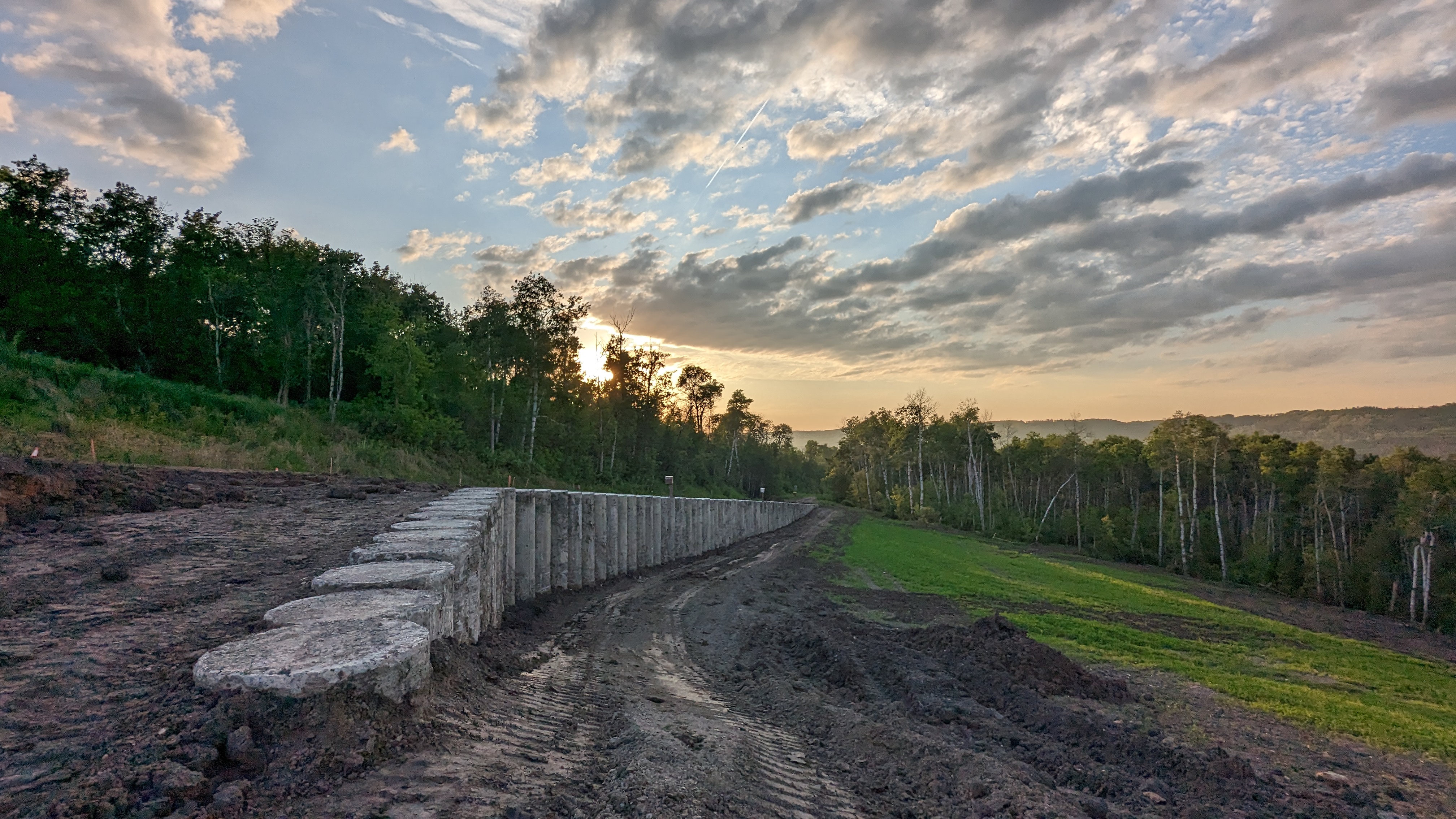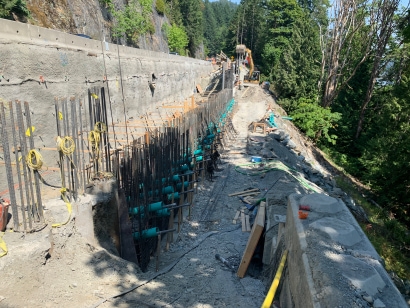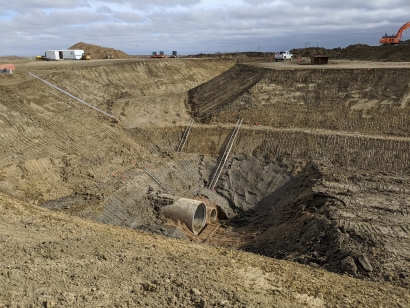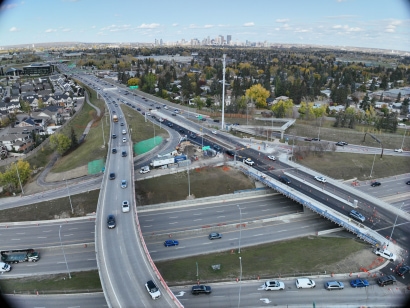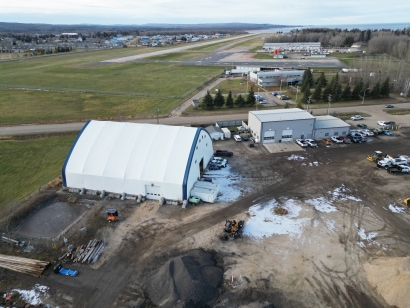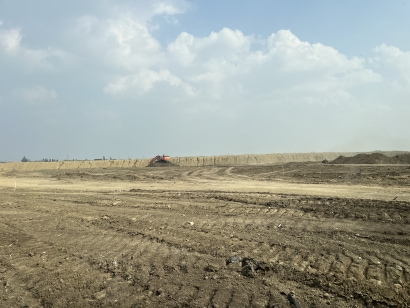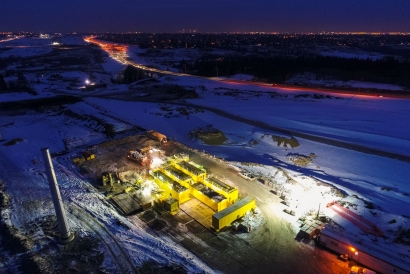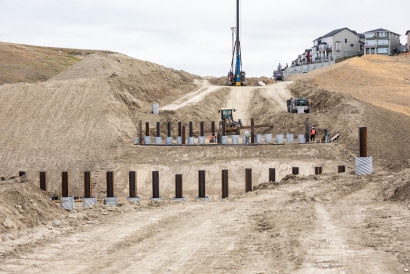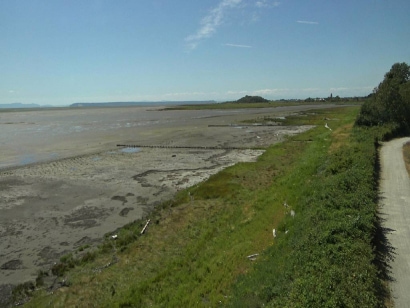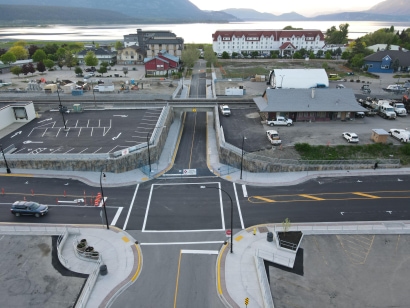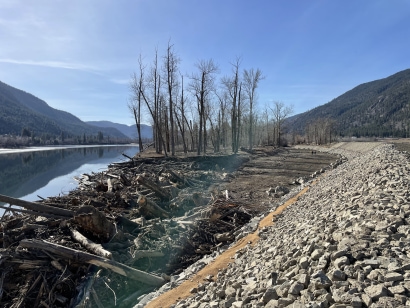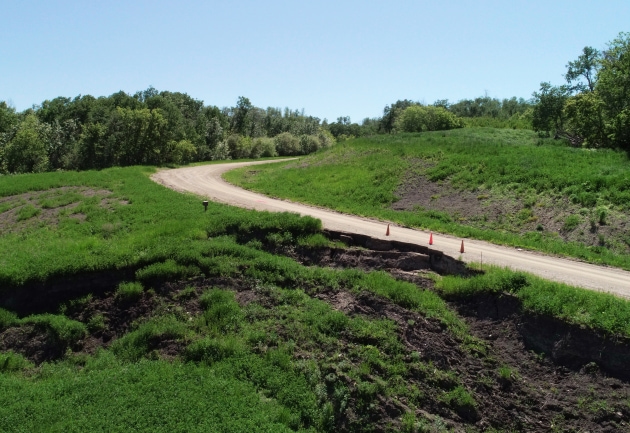
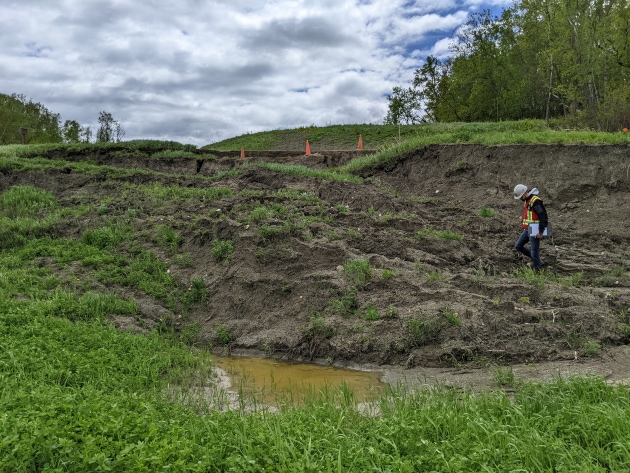
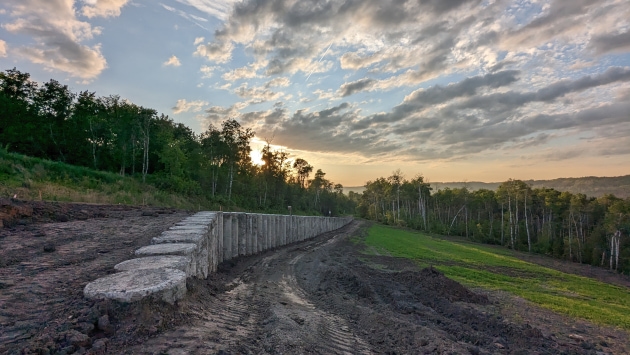
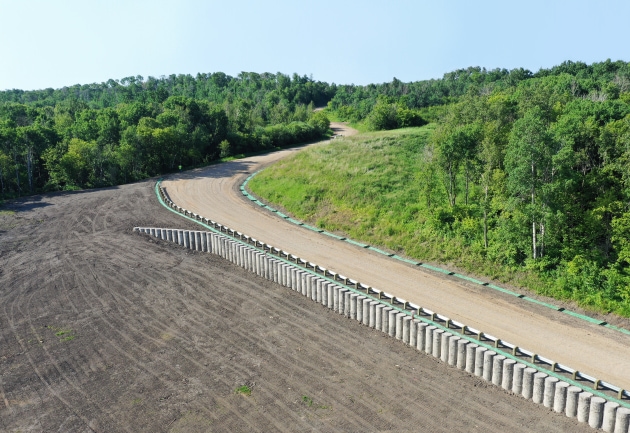


Client
Saskatchewan Ministry of Highways
Sector
Transportation
Services
Geotechnical Engineering, Geohazards, Instrumentation, Award Winning
Safely remediating and reopening a highway.
A landslide in Saskatchewan’s Assiniboine River Valley forced the closure of Highway 369. While not a major highway, it is still an important connection for residents in the area and required a lengthy detour for them to get where they needed to go.
The slow-moving slide had been under observation since 2005, but increased movement was affecting the highway’s safety, forcing it to be closed in 2021. The Saskatchewan Ministry of Highways engaged Thurber as prime consultant to provide the landslide assessment, remedial design, and construction contract administration. Design considerations included site complexity, cost, and schedule.
Thurber conducted a thorough analysis using an aerial LiDAR survey and a geotechnical drilling and instrumentation program. The information obtained allowed us to model the slope’s stability and assess various remedial options to stabilize the slope and restore the highway.
The design needed to consider the complex geological conditions and other historic landslides in the area to avoid triggering new landslide movements. Careful planning regarding construction staging and material handling in the design was also required to avoid exacerbating the existing landslide or triggering new movements during construction.
Thurber assessed four remedial options with a focus on long-term performance, landslide risk, ease of construction, estimated cost, and schedule. We ultimately chose a cast-in-place concrete pile wall as it would achieve the required factor of safety, had a lower environmental impact, minimal slope disturbance, and its construction methods were less weather dependent, allowing for construction to extend into the winter months and reopen the road quickly.
Detailed design of the pile wall used finite element modelling software to evaluate the soil-structure interaction and more accurately estimate the loading conditions and associated deformations of the pile wall and slope. We evaluated various combinations of pile diameter, length, and spacing to identify the appropriate pile configuration. Our structural subconsultant, CIMA+, used the information from the finite element model to evaluate the impact of the landslide movements on the piles and design the required pile cross-section.
The finite element modelling provided estimates of loading conditions on the piles and estimations of the resulting pile performance that were less conservative than more traditional methods of design. As such, applying this technology resulted in a reduction of the steel and concrete materials required and therefore a reduction in the overall cost to the project.
The designed pile wall was 115 m in length and consisted of 1 m diameter tangent piles with a total length of 16 m. Construction of the wall began in the fall of 2022 and was completed in the spring of 2023.
The design and construction of the pile wall was a first in Saskatchewan for the Ministry of Highways. It was Thurber’s experience with designing cast-in-place pile walls that was integral to the design and construction of this landslide remediation. This project has shown that they can be a viable and effective option in Saskatchewan.
The successful design and construction of this pile wall achieved the accelerated project schedule, had a minimal impact to the environment, reduced risks during construction, and increased the safety of the highway to the desired level. We met our client’s needs and reopened the highway to the traveling public as quickly and safely as possible.


